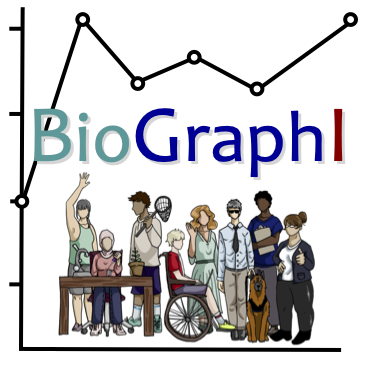From Nano to Life: Interpreting graphs from Nanopore sequencing of bacterial genomes
Author(s): Carlos C. Goller1, Carly Sjogren1, Jason Williams2
1. North Carolina State University 2. Cold Spring Harbor Laboratory
494 total view(s), 574 download(s)
1_LessonGuide_NanotoLife.pdf(PDF | 491 KB)
2_PresentationSlides_NanotoLife.pdf(PDF | 3 MB)
3_SummativeAssessment_NanotoLife.pdf(PDF | 140 KB)
4_H5PLesson_NanotoLife.h5p(H5P | 10 MB)
- 2_PresentationSlides_NanotoLife - Google Slides
- 1_LessonGuide_NanotoLife - Google Docs
- 3_SummativeAssessment_NanotoLife - Google Docs
- 4_H5PLesson_NanotoLife.h5p - Google Drive
- BioGraphI Interview with Jason Williams - YouTube
1_LessonGuide_NanotoLife.pdf(PDF | 491 KB)
2_PresentationSlides_NanotoLife.pdf(PDF | 3 MB)
3_SummativeAssessment_NanotoLife.pdf(PDF | 140 KB)
4_H5PLesson_NanotoLife.h5p(H5P | 10 MB)
- License terms
Description
This lesson was designed for the Biologists and Graph Interpretation (BioGraphI) Faculty Mentoring Network, an online professional development community. Target learner level is faculty and future faculty, though the materials could be adapted for other learners. The materials here include an instructor guide (1_LessonGuide_NanotoLife), presentation slide deck (Google slides; 2_PresentationSlides_NanotoLife), and a link to the interview with Jason Williams, (BioGraphI Interview with Jason Williams: https://youtu.be/vx93Re_rP5c).
Quantitative learning objectives
-
Identify specific components of graphs from Oxford Nanopore Technologies sequencing output.
-
Reflect on your perceptions about using graphs or figures in biology.
Diversity/equity/inclusion learning objectives
-
Reflect on your perceptions of people who do biology.
-
Compare your own interests and/or identities to those of people who do biology.
Content learning objectives
-
In 3-5 sentences, including specific details about the graph, describe the major findings and limitations of the Nanopore sequencing dataset depicted.
-
Phrase a testable hypothesis based on the use of Oxford Nanopore Technologies sequencing for bacterial genome sequencing.
Using miro.com, GoogleSlides, or Jamboard, design a simple flowchart describing a future experiment.
Cite this work
Researchers should cite this work as follows:
- Goller, C. C., Sjogren, C., Williams, J. (2023). From Nano to Life: Interpreting graphs from Nanopore sequencing of bacterial genomes. BioGraphI FMN Fall 2022, QUBES Educational Resources. doi:10.25334/53CB-N707
